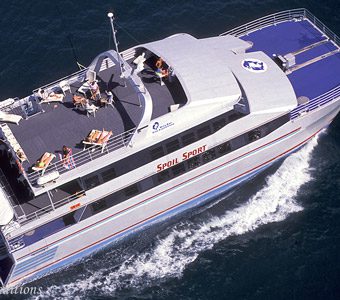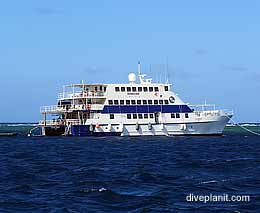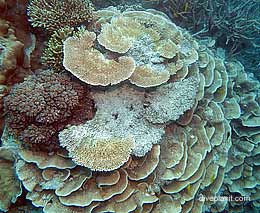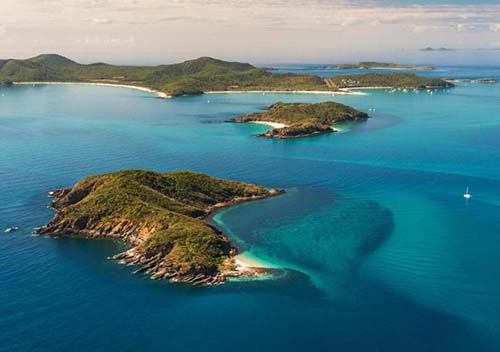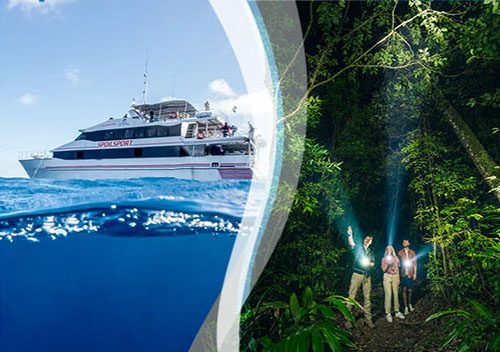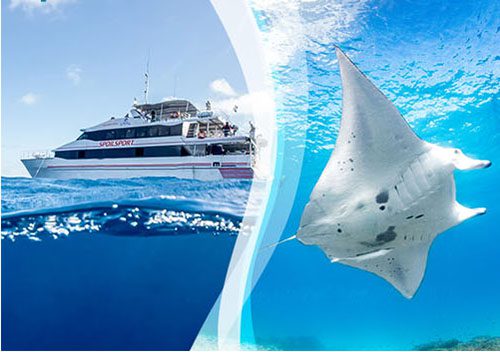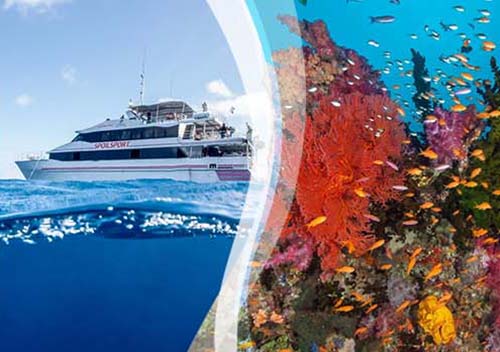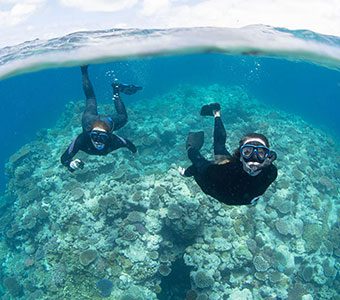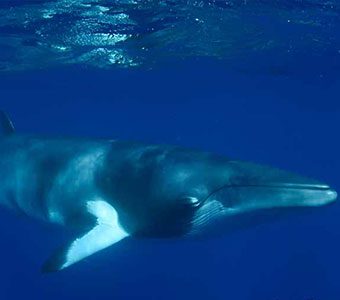







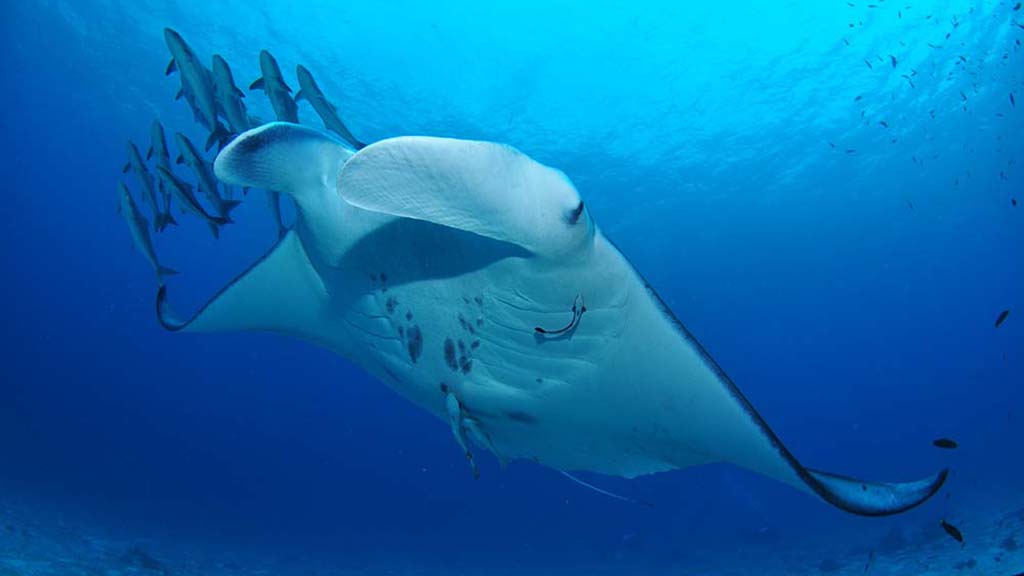



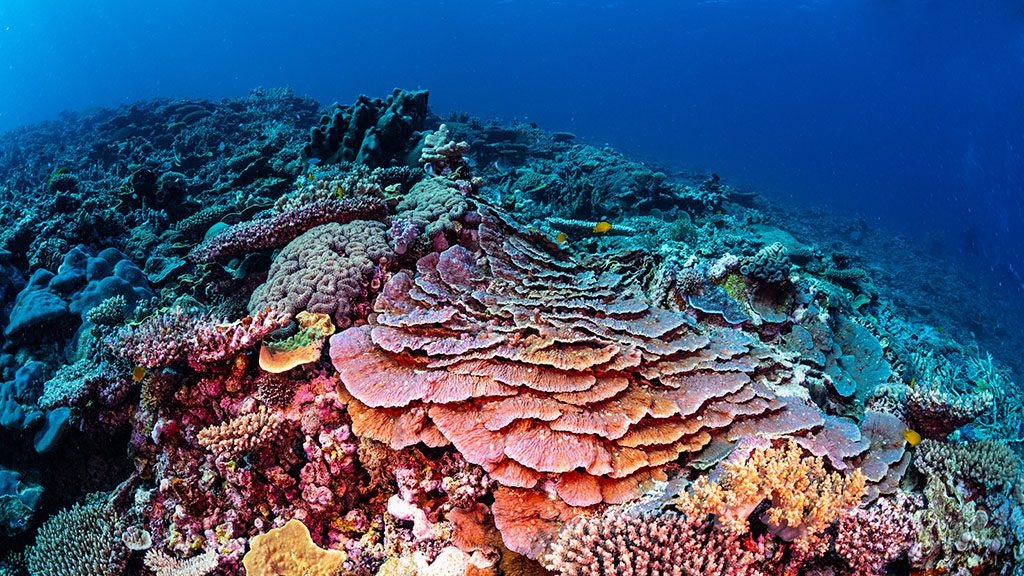
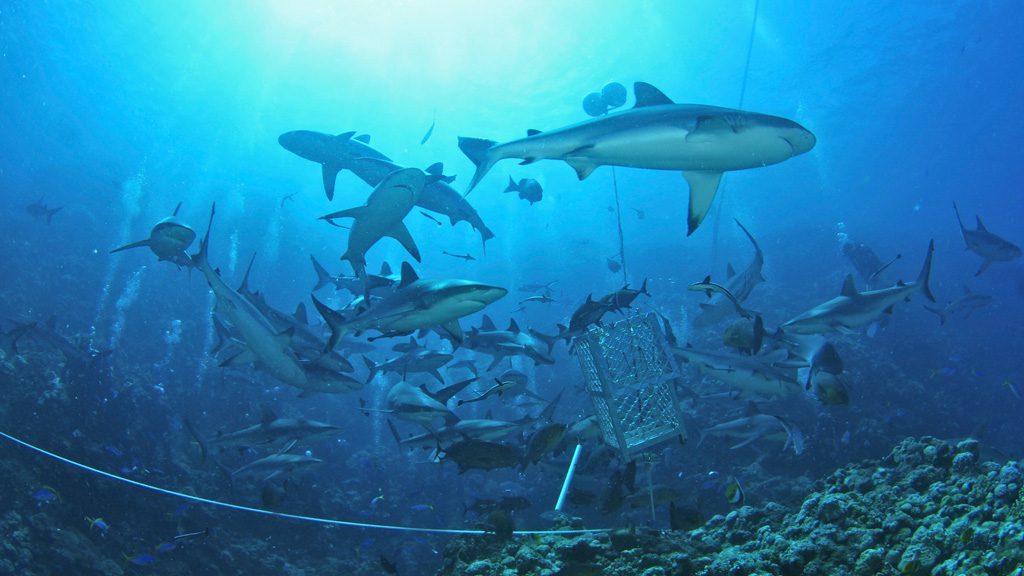
The biggest hurdle in diving the Great Barrier Reef is working out where to start. A collection of 2,900 interconnected reefs and islands stretching from Lady Elliot Island in the south to the northern tip of Cape York – it’s over 2,000km long. The reefs around Cairns can be reached on a day trip, whereas the more spectacular remote Coral Sea and Ribbon Reefs can only be reached by liveaboard.
In the central and southern Great Barrier Reef, staying on an island is a good option, but there are also several day tour options to dive sites such as Yongala wreck and the Capricorn Bunker group. Here’s our guide to diving the Great Barrier Reef.
The Location tab has a map of the main dive destinations, and if you have 3 or 4 days to a week to spend on your dive trip, check out the Resorts and Liveaboards tabs.
The best diving on the Great Barrier Reef is on the ‘outer reef’ – this is the outer edge of the Reef, typically about 50Km offshore – closed to the deeper ocean water. Great Barrier Reef diving options include a day boat, a liveaboard, staying on an island or efficient combinations of the above. It’s easiest to think of the Reef in three parts: Southern, Central and Northern.
Southern Great Barrier Reef
The Southern Great Barrier Reef is defined as the region between Hervey Bay in the South and the Keppel Islands in the North. The reef system here is called the Capricorn Bunker Group. There are two island resorts in this section of the reef, Heron Island and Lady Elliot Island. Lady Musgrave Island is accessible via day trips from Bundaberg. Further north, there’s great diving on the fringing reefs of the Keppel Islands.
Best time to dive
Water is cooler and clearer in the Australian winter months, when you are also more likely to see mantas (and if you are very lucky, migrating humpback whales) with turtles nesting on the islands between November and March.
Central Great Barrier Reef
One of the main dive areas in the central Great Barrier Reef are the Whitsunday Islands. From there, you can take a day trip to snorkel or dive out of the outer reef, or indeed around the islands. Further north, closer to Townsville, stand-out sites include the world-famous Yongala wreck, which sank in 1911 and the Museum of Underwater Art (MOUA).
Cairns Outer Reef
The starting points for the reefs of the northern Great Barrier Reefs are Cairns and Port Douglas. There are several day boats which visit the outer reefs from these cities, offering that classic Great Barrier Reef dive or snorkel experience. Pro Dive offer multi-night trips, and Divers Den offers the equivalent of a floating hotel on the outer reef.
Coral Sea and Ribbon Reefs
The reefs visited by these boats are less dramatic than those further north in the Coral Sea, with less pelagic action, but no less colourful, with vibrant soft and hard corals and colourful reef fish. Turtles are almost guaranteed, and on a few dive days you should be able to tick off a few of the Reef’s ‘Great Eight’: turtles, giant clams, clown fish, sharks, Maori wrasse, potato cod, whales and manta rays.
The remote northern Great Barrier Reef and Coral Sea reefs can only be accessed by liveaboard. Itineraries vary depending on conditions, but 7-day trips usually include the Coral Sea, via the Ribbon Reefs – literally a ribbon of outer reefs that start just north of Cairns and go all the way up to Lizard Island.
Along the ‘Ribbons’ you will encounter clouds of colourful tropical fish, an incredible variety of vibrant healthy corals, giant clams, anemones, huge schools of cruising pelagic fish, and a family of giant potato cod. In June and July it’s possible to snorkel with migrating dwarf minke whales.
Out beyond the continental shelf in the Coral Sea, the spectacular Osprey, Bougainville and Holmes Reefs are renowned for spectacular 1000 metre walls, massive soft corals and sea fans, amazing shark action and exceptional visibility.
Spirit of Freedom and Mike Ball Expeditions Spoilsport offer weekly trips from Cairns to the Coral Sea and Ribbon Reefs. You can do a full weekly trip, or a half week trip, joining or departing the tour halfway at Lizard Island via a low level scenic flight. Several times a year, these liveaboards will also visit the far northern Ribbon Reefs and remote Coral Sea reefs on expeditionary trips.
Best time to dive
The northern Great Barrier Reef can be dived year-round, with warmer water between October and March. For clear water and calmer seas, September to January. Turtle nesting season is between November and March and dwarf minke whales can be seen in June and July.
Getting There
Several dive liveaboards operate out of Cairns, with some, like Mike Ball’s Spoilsport visiting the far northern Ribbon Reefs and the Coral Sea, others staying closer to the sites visited by day boats. These, which include Divers Den’s OceanQuest and Pro Dive, offer a more flexible agenda, with daily departures from Cairns.
Qantas, Jetstar and Virgin operate daily flights from most capital cities in Australia to Hervey Bay, Bundaberg (Lady Elliot Island and 1770), Gladstone (Heron Island), Rockhampton (Keppel Islands), Townsville (Yongala and Magnetic Island) and Cairns.
Lady Elliot Island and Heron Island at the southern tip of the Great Barrier Reef offer great eco-experiences above and below the water line. Townsville and Magnetic Island in the central Great Barrier Reef offers the famous wreck of the Yongala, some great reef diving and the Museum of Underwater Art (MOUA).
At the luxury end you have Mike Ball’s Spoilsport, and Spirit of Freedom. These boats cruise out overnight to the top end (Cod Hole) and the outer most reefs such as Osprey Reef. The meals are cooked by qualified chefs, the staff to guest ratio is between 1:3 and 1:4 and the cabins are pretty luxurious. Trips last 3, 4 or 7 days, they typically go out weekly, and usually include a low level flight back. With up to 16 dives in 4 days the cost per dive is around $140, but you need to factor in all the meals and accommodation you’re not paying for whilst you spend 4 days and nights in the lap of luxury not to mention the quality of the diving. Pro Dive Cairns also offer three night trips, though their boats are a little less luxurious.
Another style of live-aboard is a combination of day trip, but with any number of overnight stays on-board a larger vessel that stays on the Reef overnight. This style of live-aboard is offered by Divers Den, where a day boat deliver divers to the Ocean Quest. The advantage here is that you get three dives each day from a combination of the two vessels, but also a night dive on the ‘mothership’.
Check out a selection of the best diving deals on offer!



